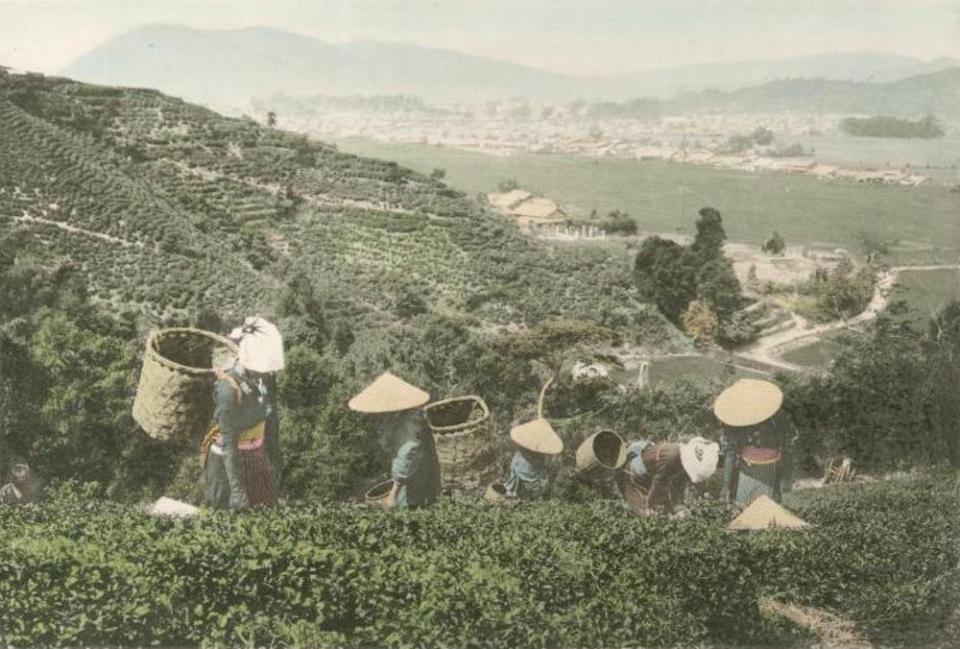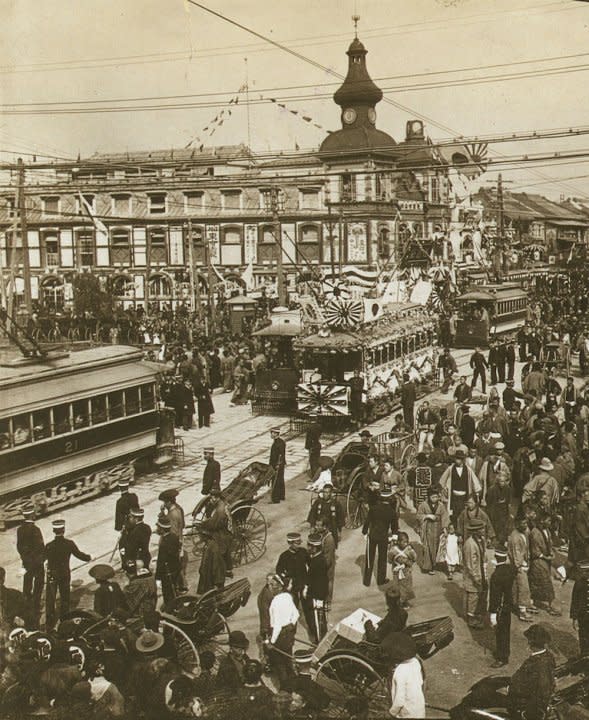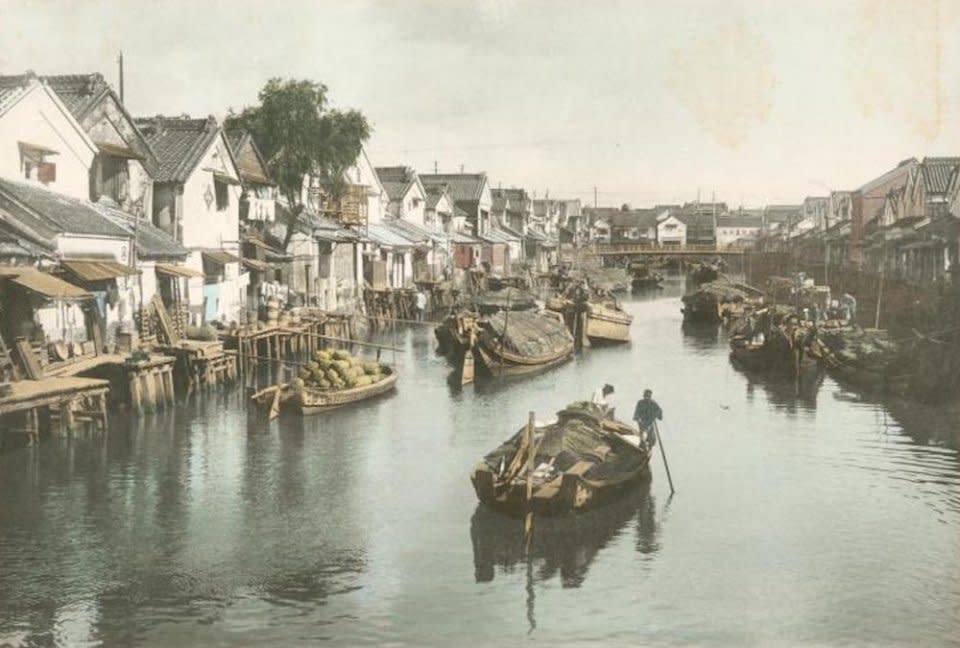Amazing images of Tokyo before it was a city

NYPL Plantation workers pick tea leaves in Tokyo, circa 1910s.
Before Tokyo matured into the gleaming, dense city it is today, it was a small fishing village called Edo.
Now home to over 13 million people, the Japanese capital has changed dramatically since its beginnings in the 12th century.
These maps, woodcuts, and old-time photographs show the journey of Tokyo from small village to today.
Tokyo was originally known as Edo, which means “estuary.” In the late 12th century, Edo was fortified by the Edo clan, which built a castle and military capital (pictured below). Some of the estate’s moats and walls still survive to this day.

Source: National Geographic and Open Buildings
By the 1630s, Edo had a population of 150,000.

Source: Early Modern Japanese Literature: An Anthology
And over the next century, the small fishing village grew into the largest metropolis in the world, with a million residents by 1721.

Source: Urban Networks in Ch’ing China and Tokugawa Japan
In the 18th century, Edo became the capital of Japan. During this time, it enjoyed a long period of peace, called the Pax Tokugawa.

Source: Edo, the City That Became Tokyo
But this ended when American Commodore Matthew C. Perry docked in Edo in 1853. Perry negotiated the opening of two main ports with the Japanese government, leading to severe inflation and subsequent protests from residents.

Source: Columbia University
The city of Tokyo, which was already Japan’s main cultural and commercial center, was established 1889. It started industrializing.

Tea, grown in plantations outside the Tokyo center, became a major global export for Japan in the late 19th century.

Source: The Asiatic Society of Japan
In its masterplan, the city prioritized access to major railway stations rather than large highways. This encouraged density.

Source: Japan Railway and Transport Review
Tokyo also developed a network of canals in the early 20th century. Boats would distribute goods to the wharfs, warehouses, and factories on the canals’ edges.

Source: Go Tokyo
To this day, water lilies still cover a substantial part of Shinobazu Pond, located near the city center. Here it is in a 1910 photo:

Mountain Fuji towers over Tokyo in the image below, circa 1910s:

Tokyo’s population kept climbing. By 1920, it reached 3.7 million.

Source: Tokyo Metropolitan Government
Two major catastrophes hit Tokyo in the early-to-mid 20th century: the 1923 Great Kantō earthquake and World War II.

Despite the extreme loss in life and infrastructure, the city slowly recovered over the next few decades. Here is a street in Tokyo’s theater district in 1930 …

… and the Asakusa temple, also in 1930.

Today, Tokyo is still the world’s largest city, with a population of approximately 13.5 million.

Source: Japan Times
Now a bustling metropolis with some of the world’s tallest towers, Tokyo has come a long way since its humble beginnings as a seaside village.

The post Amazing images of Tokyo before it was a city appeared first on Business Insider.

 Yahoo Finance
Yahoo Finance 